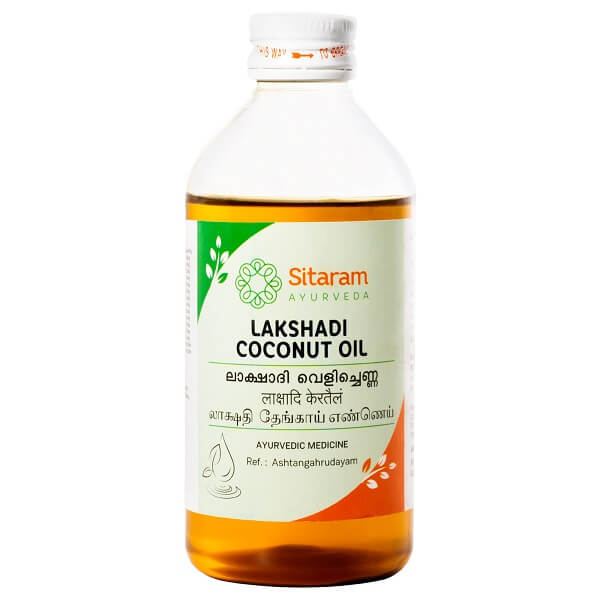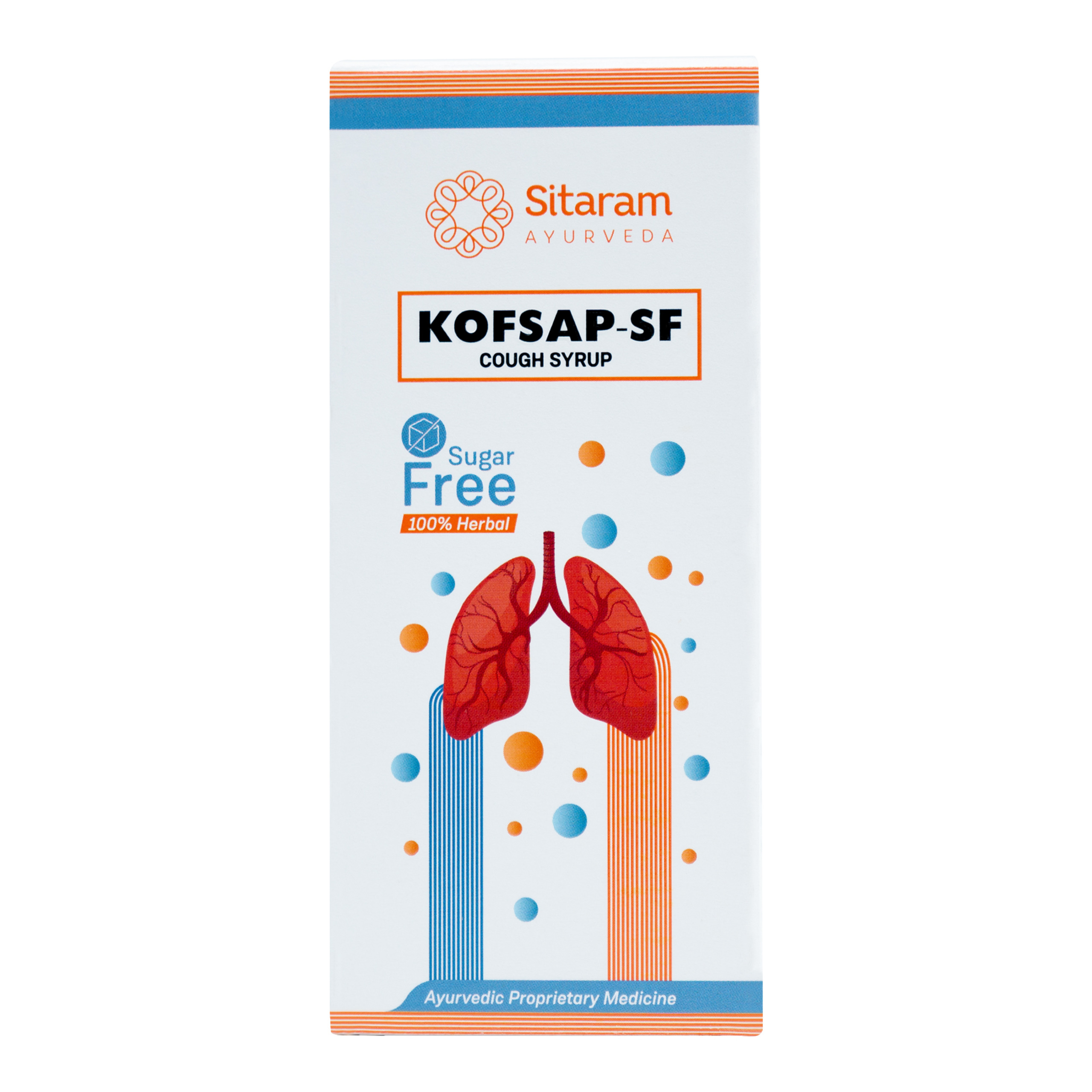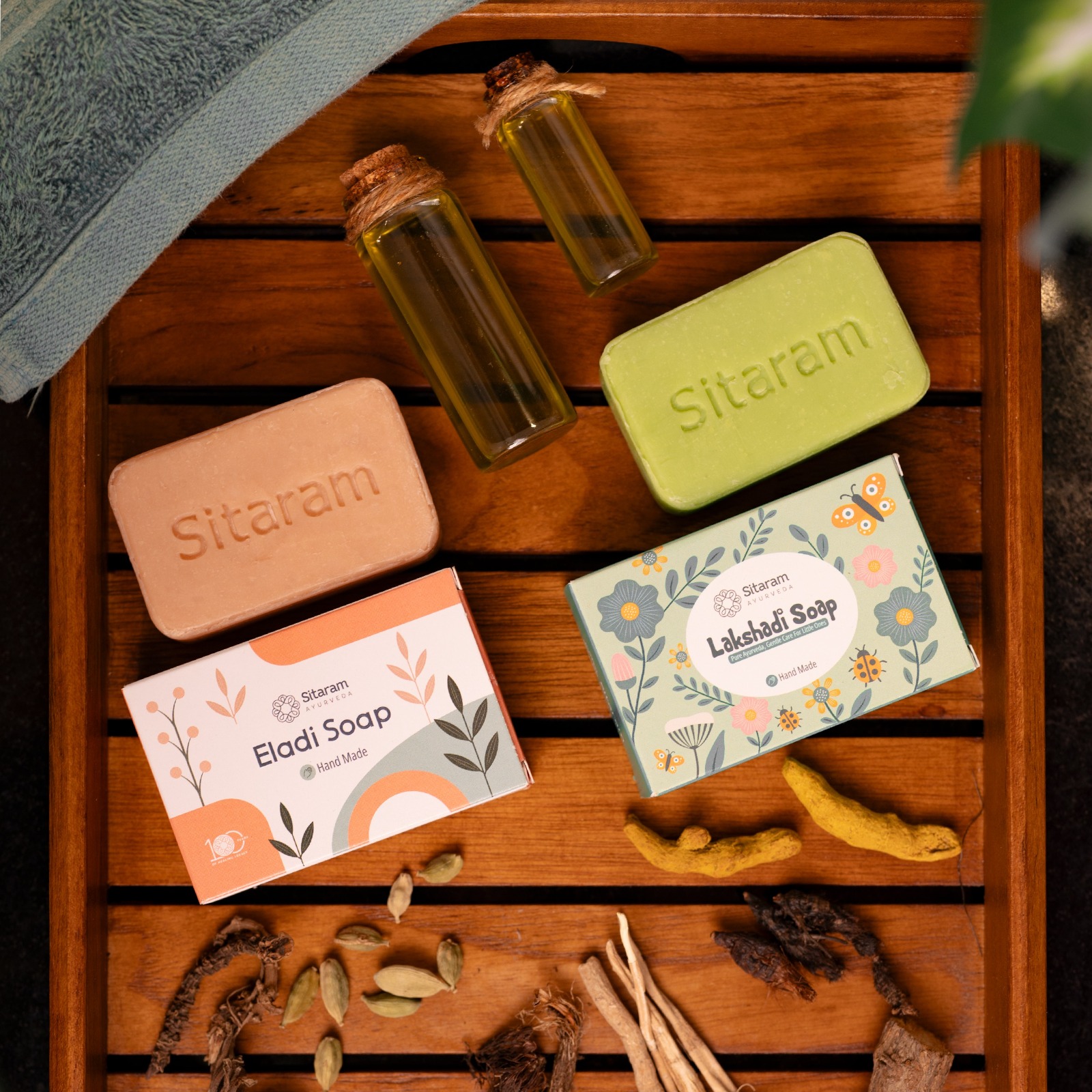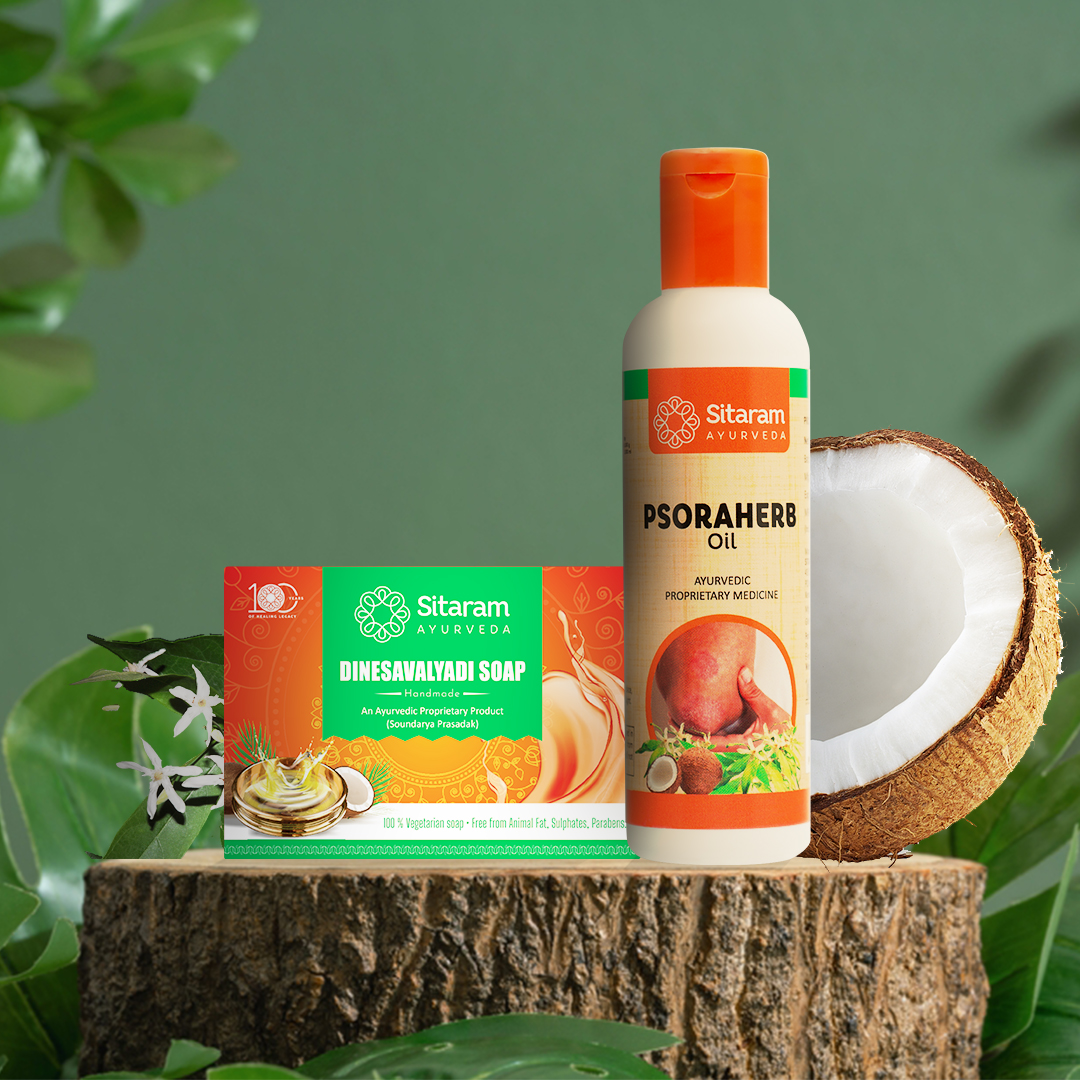Description
Lakshadi Kera Thailam is a traditional formula indicated for ‘Moordhataila Prayoga’ (application of oil to the crown of the head) as well as ‘Abhyanga’ (body massage), especially in children. ‘Laksha’, the processed form of the reddish brown resin secreted by the female lac insect, is hailed by Ayurvedic Physicians for its superalative ‘Pittasamana’ – pacification of heat and viscidity of Pitta, and ‘Balya’ – strengthening properties.
Aggravated Pitta manifests as inflammatory changes in the body. Regular application of the taila balances the tridoshas in the system and pacifies aggravated ‘Pitta’ dosha in the body. Authentically mentioned in the context of Balachikitsa or Pediatrics, in Ashtanga Hridaya , Lakshadi Kera Thailam soothes and strengthens the body and mind, and is beneficial in regaining health and vigor in convalescents.
Features and benefits of Lakshadi Kera Thailam –
- Applied to the head and body, Lakshadi Kera Thailam pacifies the intense heat and viscidity of Pitta. Relieves excessive body heat and emaciation.
- Regular application of the taila soothes the gut, relieves acidity and inflammation in the gut.
- It relaxes the mind and imparts mental agility. A serene and calm mind is the most functional. Application of Lakshadi Kera Thailam relieves unwarranted anxiety and stress. It brings about mental focus and attention.
- Lakshadi Kera Thailam also builds the body’s immunity against recurrent infection and disease. Indicated for regular use in children to prevent recurrent respiratory tract infections, flu and fever.
- The anti-microbial and skin brightening properties of Laksha, Daru, Kushta, Chandana and Nisa make it a perfect skin tonic.
Quantity sufficient based on area of application.
Advised for Moordhataila (application to head) as well as Abhyanga (body massage).
Key Ingredients:
LAKSHA (Laccifer lacca)
Laksha or lac is a gum-like substance obtained from the female lac insect (Laccifer lacca). It effectively helps in wound healing and healing of fractures. It is also used in bleeding disorders and provides relief from burning sensation and nasal bleeding.
ASWAGANDHA (Withanya somnifera)
Ashwagandha is commonly used for stress. It is also used as an “adaptogen” for many other conditions, but there is no good scientific evidence to support these other uses. Ashwagandha contains chemicals that might help calm the brain, reduce swelling (inflammation), lower blood pressure, and alter the immune system. The root contains steroidal compounds which include the lactones Withaferin A and carbon-27-glycowithanolide, known collectively as the Withanolides. The Withanolides are responsible for the varied medicinal applications of the herb. Winter Cherry also contains a fair amount of alkaloids including tropine, pseudotropine, isopelletrine, anaferine and saponins, which impart medicinal properties to the herb.
HARIDRA (Curcuma longa)
Haridra ,also called known as Curcuma longa. The anti-inflammatory and antioxidant properties of Haridra assist in preventing the progression of diabetes related changes in organs like the kidneys, retina, nerve cells and minute blood vessels in the body . he root of the herb, used either fresh or dried, has a host of medicinal benefits. It acts as a carminative and also enhances the complexion and skin-tone. In addition, Turmeric can be used to combat liver damage, respiratory disorders and ulcers.
DARUHARIDRA (Berberis aristata)
Also known as Haldi, this vibrant yellow coloured spice checks the worsening of Pitta doshas like jaundice. The powerful anti-inflammatory and antiseptic properties of turmeric help in evading infections and treats various skin conditions. Tree Turmeric is a revered herb in Ayurvedic medicine. Possessing antibacterial, anti-inflammatory, antipyretic and antiseptic properties, the herb is used as a cholagogue, stomachic, laxative and diaphoretic.
KUSHTAM (Sausseria lappa)
Kushtam also called as Sausseria lappa is a well used drug in Ayurveda that has a good antiinflammatory and antibacterial property. It also helps in preventing infections.
CHANDANA (Santcalum album)
Sandalwood or Svetchandan is also known as Srigandha as per Ayurveda. It is one of the oldest and most precious sources of natural fragrance with immense medicinal and commercial significance.Sandalwood oil has various benefits for the skin. Topical application of Sandalwood oil on the face helps promote skin cell growth. Generally, it is considered as the best remedy for headaches when applied in the form of paste or oil. Inhalation of Sandalwood oil also helps to manage respiratory infections that work by reducing the inflammation in the lung airways due to its anti-inflammatory property.
RASNA (Alpinia Galanga)
Also known as Alpinia Galanga is an Ayurvedic Medicinal which is a rhizome grown in most of Southeast Asia and is used in cooking and home made remedies. Rasna plant is used in many Ayurvedic medicines in India, Tibet, Africa to help with inflammation, bronchitis, asthma, cough, indigestion, piles, joint pains,obesity, diabetes. The paste of the leaf is also applied externally to reduce swelling.
YASHTI (Glycyrrhiza glabra)
Also known as Glycyrrhiza glabra, Yashtimadhu is beneficial in treating acid peptic disease. It reduces gastric acid secretion and inhibits the formation of peptic ulcers. It is also one of the world’s most widely researched herbs for its role in supporting the body’s normal digestive function. Useful in Hyperacidity, Useful in Peptic ulcer, Useful in Gastro-Esophageal Reflux. Disease (GERD).


 Sign In
Sign In Cart
Cart 










S K Sharma (verified owner) –
Good oil for pitta problem
S K Sharma (verified owner) –
Good for skin affected by pitta.
SK Sharma (verified owner) –
Helps in body heat and headaches at perimenopause
Anonymous (verified owner) –
Anonymous (verified owner) –